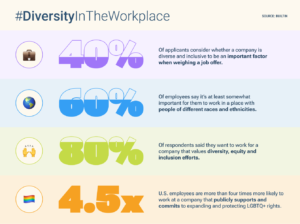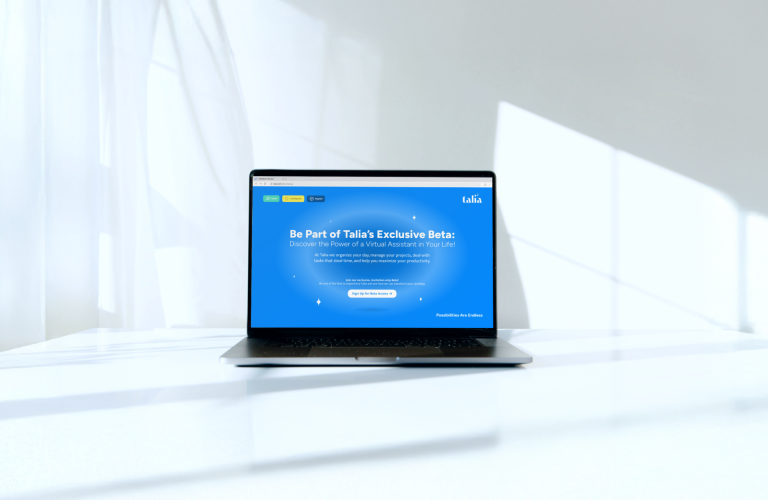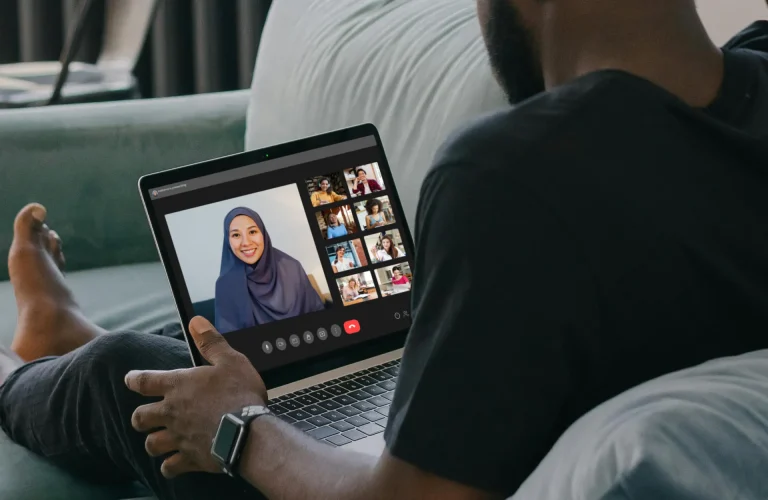Can good intentions go terribly wrong? When it comes to a company’s DEIB strategy, lack of planning and implementation can lead to some employees feeling that they’re being asked to do more than what their current roles require, while other teammates might have downright negative reactions to the initiatives. There’s no perfect or ideal way to start the conversation of Diversity, Equity, Inclusion and Belonging (DEIB for short) in your organization. However, by avoiding the following pitfalls, you can begin to create a workplace that is safe and allows every teammate to thrive.
Tokenizing
If while interviewing for a new role you’re thinking about how great a particular person will look in the next offsite’s pictures, don’t. You’re hiring for a role, not casting a tv show. These are real people’s lives we’re talking about. Unless you actively look for ways to make every teammate feel safe and supported, you’re only adding stress, burnout, and turnover to your team.
Before pointing a finger at anyone else or doing an uncomfortable seminar where half of your employees are dozing off, think about your own biases and prejudice. There are so many beliefs that are passed down to us through family, media, and our own environment. We need to look into ourselves first before asking anyone else to do so. Doing this will help you come up with strategies and conversations that can lead to growth and create a work environment where every team member feels valued, seen, and respected.
Managing Expectations
A one-time consulting session or company-wide seminar with a DEIB expert is not going to solve the issue. What’s more, hiring a DEIB manager can also have unwanted results. Auditing problems and issues is only the beginning of rehabilitating culture. After the assessment, there need to be concrete actions and steps to ensure that initiatives will be followed through. Everyone needs to get involved. Think of it as sunscreen, you might not see the results after using it daily, but if you don’t use it, you’d definitely feel the consequences.
It’s not just about optics, but also accountability. Perhaps you heard about the controversy surrounding the Moon Juice wellness brand in 2022. After allegations of racism, the company decided to hold a Zoom call with a speaker about this particular issue. It sounds like a familiar story, in the way that until something that can be publicly damaging happens then this big show needs to be orchestrated. But what happens after? It can’t all fall on the shoulders of HR or DEIB managers. Each department and team should include action items to ensure this until it becomes a part of company culture.

Self-Evaluation
Before going all in on a campaign, team leaders should set an example by analyzing their own biases, both conscious or not. Where did we learn these concepts, and how can we evolve from this? It’s a constant process where a deep understanding of our own stories and upbringing might need to be deconstructed. Think about how certain words or actions might affect those around you. It’s not only a question of whether these did hurt someone else. It’s the ongoing evaluation of whether you are giving each and every member of your team the dignity and support they deserve.
Unconscious bias in the workplace can take many forms: who do you assign particular tasks to and why? Who do you assume might need more support or training? Do you ever jump to conclusions about someone without any previous experience or evidence? It’s okay to realize this. We all have these biases. When we see them, they’re easier to correct.
C-Suite Involvement
It’s not just that C-suite and founders should attend discussions regarding Diversity, Equity, Inclusion, and Belonging. They also need to set an example. Speaking from the heart with empathy about realizations or struggles is a sign of vulnerability and strength. Your team wants to know that you are also doing your best to get this right. By being a part of initiatives and actually getting involved, C-suite execs can actually build stronger connections with their teams and even inspire new actions and improvements in culture.
Rather than worrying about getting it wrong, it’s important to think about getting it done. DEIB often remains in a concept and planning stage rather than being set in motion. It can take a while to get it just right, and even then it’s a constant transformation and evolution towards reaching the goal of every member of the team feeling supported and seen. Strategize ways to incorporate initiatives company-wide but go beyond the whiteboard and into the way meetings are being held, customer interactions, and every aspect of the business. The more you care enough to put in the effort, the closer your company will be to getting to your DEIB goal.
Copyright © 2024 EQUALS TRUE. All Rights Reserved.





